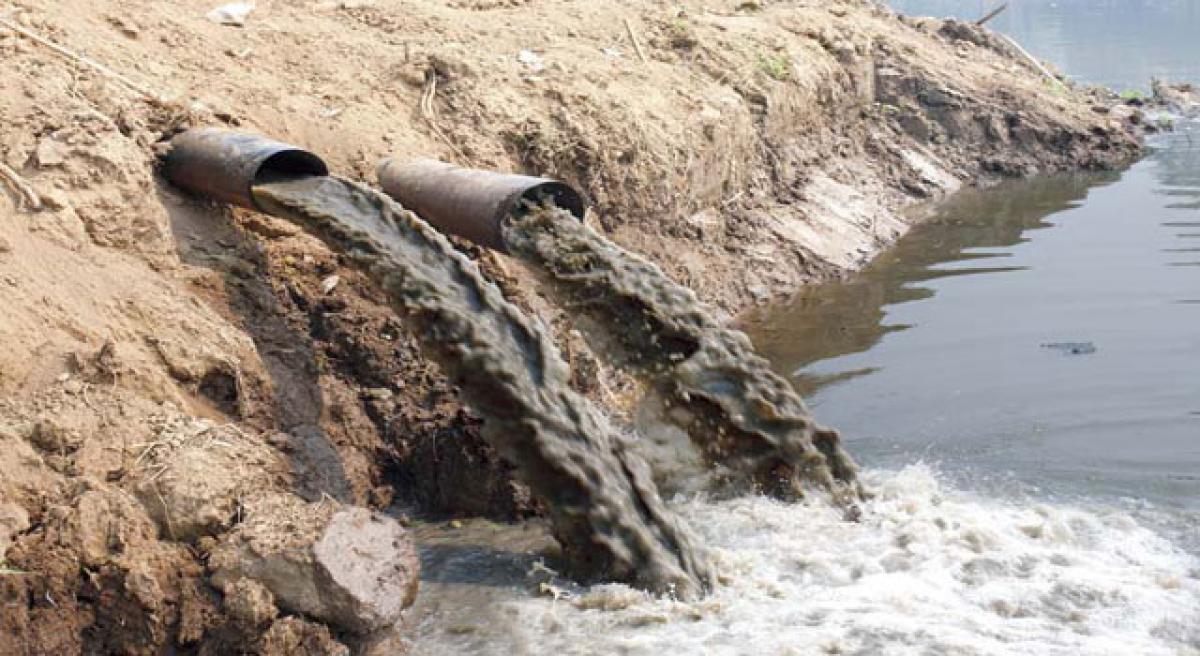Live
- Former Minister Avanti Srinivas Resigns from YSRCP, Citing Personal Reasons
- 3-judge Special Bench of SC to hear today pleas against Places of Worship Act
- MP CM to lay foundation stone for Rs 1,700 crore Sondwa irrigation project in Alirajpur
- Garena Free Fire MAX Redeem Codes for December 12, 2024 – Get Free Rewards
- Vinay Kumar Yaragani’s Strategies to Reduce Unpaid Transactions in E-Commerce
- Telangana: Thieves Rob Three Shops in Armor Town, Nizamabad
- Actor flayed for attack on journalists
- On completion of one year, Bhajan Lal govt in Rajasthan to hand over 15,000 job letters
- Survey process at a brisk pace
- Direct flight between Delhi, Rajahmundry from today
Just In

There was a time when Hanif S Parkar, a fisherman from Dhabol Khadi village in the coastal district of Ratnagiri in Maharashtra, could net 25 different kinds of fish from Vashisthi, the local river.
There was a time when Hanif S Parkar, a fisherman from Dhabol Khadi village in the coastal district of Ratnagiri in Maharashtra, could net 25 different kinds of fish from Vashisthi, the local river. For the past 25 years, factories in the neighbouring industrial belt of Lote Parshuram have been dumping untreated effluents in the river, destroying all living forms in it. The fish are dying and the river no longer offers a livelihood for Parkar and others like him in the village.
For the last 15 years, Parkar has been campaigning against river pollution in the area, engaging with the officials of the Maharashtra Pollution Control Board (MPCB) as well as the Maharashtra Industrial Development Corporation (MIDC) which maintains the belt. Maharashtra, the state with India's biggest economy, also has the highest number of polluted river stretches in the country. And, at 161, it also has the most number of cities and towns along polluted stretches, according to a 2015 report of the Central Pollution Control Board (CPCB).
Of the 156 locations where the CPCB has set up its monitoring units on the 49 rivers and tributaries in the state, 153 do not meet the water quality criteria. The MPCB has issued more than 5,300 show-cause notices to erring factories between 2011 and 2017. The MPCB has limited powers to discipline errant units, and hence the state has been unable to contain river pollution along its industrial zones. The board can issue notices or levy a small fine. But these measures are not strong enough to deter factories from emptying their waste into rivers.
The state has more than 75,000 manufacturing units that include automobile, tyre, textiles, chemicals and steel industries. Many of them are in the Pune-Chinchwad region. Pune attracted 45 per cent of the notices (2,392 of 5,276) issued to polluting factories between 2011 and 2016. This is thrice the number served to the region that attracted the second-most – Kolhapur (673). Pune also has the most polluted rivers in the state, according to a joint survey on water quality conducted in 2014 by the MPCB and The Energy and Resources Institute.
In 2007, the state government had drawn up a plan to develop infrastructure in the state to facilitate industrial growth. The plan included Pune, Nashik, Nagpur, Kolhapur, and Aurangabad. These regions, along with Navi Mumbai, are among the top six in the list of regions served the most notices by the MPCB. Factories in the Mumbai Metropolitan Region – comprising areas such as Mumbai, Navi Mumbai, Thane, Raigad and Kalyan – received about 20 per cent of the notices.
The MPCB classifies factories on the basis of a pollution index, calculated by factoring in how much their operations pollute air and water, and generate hazardous waste. They are then classified into red, orange and green categories, red being heavily polluting. Of the 5,276 notices issued by the MPCB, 65 per cent (3,445) went to factories in the red category. Orange and green categories attracted 1,599 and 232 notices, respectively. A look at the list of erring companies showed that large-scale units were served with 47 per cent of the red-category notices. The rest were served to medium and small-scale industries.
IndiaSpend analysed 150-odd notices served by the MPCB to erring units and found that in many cases, multiple directives had to be issued to the same company because it simply did not respond to an earlier alert. But merely serving notices means little, said experts. (In arrangement with IndiaSpend.org)
By Raina Paul & Prabhpreet Singh Sood

© 2024 Hyderabad Media House Limited/The Hans India. All rights reserved. Powered by hocalwire.com







